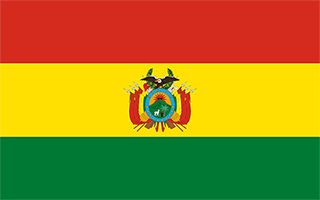Facts and Data
Webpages:
Official Unesco Page
View photos from OUR PLACE the World Heritage collection
Basis Data:
Unesco World heritage since: 1998
Size of heritage:
Coordinates:
Longitude: -62,183°
Latitude: -17,833°
Summary
The archaeological site of Samaipata consists of two parts: the hill with its many carvings, believed to have been the ceremonial centre of the old town (14th–16th centuries), and the area to the south of the hill, which formed the administrative and residential district. The huge sculptured rock, dominating the town below, is a unique testimony to pre-Hispanic traditions and beliefs, and has no parallel anywhere in the Americas.
Location on Map
Show bigger map on Openstreetmap
Fuerte de Samaipata: A UNESCO World Heritage Site in Bolivia
The Fuerte de Samaipata, located in the Province of Florida, Department of Santa Cruz, Bolivia, is a remarkable UNESCO World Heritage site that holds great historical and cultural significance. This archaeological site, also known as El Fuerte, is a testament to the rich and diverse history of the region.
History
The origins of Fuerte de Samaipata can be traced back to the pre-Inca period, around the 14th century. It was initially inhabited by the Chané people, who were later conquered by the Incas. The Incas recognized the strategic importance of the site and used it as a ceremonial center and administrative hub.
After the Spanish conquest in the 16th century, the site underwent significant changes. The Spanish colonizers built a town around the fort, which served as a military outpost and a center for evangelization. The fort was used as a base to control the surrounding territories and protect the Spanish interests in the region.
During the colonial period, Fuerte de Samaipata became a melting pot of different cultures, blending indigenous, Inca, and Spanish influences. This fusion is evident in the architecture and artwork found at the site.
Architecture and Current State
The main attraction of Fuerte de Samaipata is the massive rock carving known as the "El Fuerte." This carving, measuring approximately 220 meters in length and 60 meters in width, is a unique blend of Inca and pre-Inca architectural styles. It features intricate carvings, including geometric patterns, animals, and human figures.
The site also includes several ceremonial platforms, residential areas, and water channels. These structures provide insights into the daily life and religious practices of the ancient inhabitants.
Despite its age, Fuerte de Samaipata has remarkably withstood the test of time. The carvings and structures have been well-preserved, allowing visitors to experience the grandeur of the past. However, the site has faced some challenges, including natural erosion and human intervention.
To protect and preserve this invaluable heritage, the Bolivian government, in collaboration with UNESCO, has implemented various conservation measures. These include regular maintenance, monitoring of the site's condition, and controlled visitor access.
Today, Fuerte de Samaipata continues to attract visitors from around the world who are fascinated by its historical and cultural significance. The site offers a unique opportunity to explore the ancient civilizations that once thrived in the region and to appreciate the architectural and artistic achievements of the past.
Visitors to Fuerte de Samaipata can take guided tours to learn about the site's history and significance. The surrounding landscape, with its lush vegetation and scenic views, adds to the overall experience.
Conclusion
Fuerte de Samaipata is a UNESCO World Heritage site that showcases the rich history and cultural heritage of Bolivia. Its unique rock carving, architectural structures, and fusion of different cultures make it a must-visit destination for history enthusiasts and travelers alike. Through careful preservation and conservation efforts, this remarkable site continues to inspire and educate visitors about the ancient civilizations that once thrived in the region.
